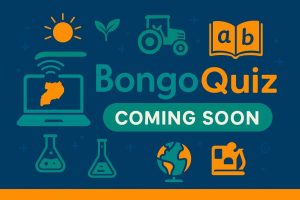Contents
- 1 Introduction
- 2 Key Tech Trends in Ugandan Education
- 2.1 1. E-Learning Platforms
- 2.2 2. Mobile Learning
- 2.3 3. Virtual and Augmented Reality
- 2.4 4. Artificial Intelligence (AI)
- 2.5 5. Educational Games and Gamification
- 2.6 6. Cloud Computing
- 2.7 7. Big Data and Analytics
- 2.8 8. Internet of Things (IoT)
- 2.9 9. Blockchain Technology
- 2.10 10. Digital Libraries and Archives
- 2.11 11. online radio
- 3 Conclusion: The Future of Tech in Ugandan Education
- 4 FAQ on Key trends in Uganda’s education system
Introduction
In recent years, Uganda has witnessed a significant transformation in its educational landscape, largely driven by the integration of technology. This change is part of a global trend where educational systems are adapting to the digital age, leveraging new technologies to enhance learning environments and expand educational opportunities. This blog post explores the current tech trends in the educational sector of Uganda, highlighting how these innovations are shaping the future of learning in the country.
The Rise of Educational Technology in Uganda
Uganda’s educational sector has traditionally faced numerous challenges, ranging from limited access to resources to disparities in education quality between urban and rural areas. However, the advent of digital technology has begun to bridge these gaps. Schools, from primary to tertiary institutions, are increasingly incorporating tech solutions to improve educational delivery and outcomes.
The Ugandan government, in collaboration with international partners and private sector stakeholders, has initiated several projects aimed at digitizing the education system. These initiatives include providing schools with computer labs, increasing internet access, and training teachers to use educational software and digital tools effectively.
Key Tech Trends in Ugandan Education
1. E-Learning Platforms
E-learning platforms have become a cornerstone of educational technology in Uganda. Platforms like Remedial corner, Kolibri and Moodle are used in schools to provide students with access to a vast range of learning materials online. These platforms are especially crucial in remote areas where physical resources are scarce. They offer interactive content, including videos, quizzes, and simulations, that cater to different learning styles and paces.
2. Mobile Learning
With the widespread use of mobile phones in Uganda, mobile learning has emerged as a vital educational tool. Apps like Duolingo for language learning and Khan Academy’s mobile app allow students to learn on-the-go. This trend is particularly impactful in Uganda, where mobile penetration is high, even in rural areas, making education accessible to students outside the classroom setting.
3. Virtual and Augmented Reality
Although still in its infancy in Uganda, virtual and augmented reality (VR/AR) are set to revolutionize educational experiences by making learning immersive. For example, medical students at Makerere University have experimented with VR to perform virtual dissections and surgical procedures, enhancing their learning experience without the need for physical specimens.
4. Artificial Intelligence (AI)
AI is beginning to play a role in Ugandan education, primarily through adaptive learning technologies. These AI-driven platforms assess a student’s current knowledge base and adapt the difficulty of tasks in real-time to suit their learning needs. This personalized learning approach helps in identifying knowledge gaps and providing tailored educational experiences.
5. Educational Games and Gamification
Gamification of education involves using game design elements in learning environments to motivate participation and enhance student engagement. In Uganda, educational games are being used to teach everything from numeracy and literacy to complex subjects like science and history. These tools make learning interactive and fun, promoting deeper engagement with the content.
6. Cloud Computing
Cloud computing has become a game-changer in many sectors, including education. It allows schools and universities in Uganda to store and access large volumes of data online without needing physical storage solutions. This technology supports collaborative learning whereby students and teachers can easily share resources and work together in real-time, regardless of their physical locations.
7. Big Data and Analytics
Educational institutions in Uganda are starting to utilize big data and analytics to improve student outcomes. By analyzing data collected from online learning platforms, educators can identify trends and patterns in student performance, enabling them to tailor educational strategies to individual needs and predict future learning outcomes. This can lead to more informed decisions regarding curriculum adjustments and teaching methodologies.
8. Internet of Things (IoT)
IoT in education is still nascent in Uganda but shows great potential. Devices connected to the Internet can help create “smart classrooms” where equipment like projectors, tablets, and laboratory instruments are interconnected. This integration can lead to more efficient classroom management and an enhanced learning environment that dynamically adjusts to the needs of students.
9. Blockchain Technology
Blockchain technology, though more commonly associated with cryptocurrencies, offers significant advantages in ensuring the security and integrity of educational records. Ugandan educational institutions could use blockchain to create tamper-proof records of student achievements and credentials. This could be especially beneficial for higher education where verifying the authenticity of qualifications is crucial.
10. Digital Libraries and Archives
To combat the lack of physical academic resources, digital libraries and archives are becoming increasingly crucial in Uganda. These platforms provide students and educators with access to a plethora of books, academic papers, and other educational resources that would otherwise be inaccessible, especially in under-resourced schools.
11. online radio
Gone are the days when radios were for only music and news. In the 21st century, students and teachers use undertake their lessons on online radios. These radios provide a good service for remedial lessons to supplement on the content obtained from class. A case in point is Radio remedial Uganda, which provides a rich blend of curriculum specific content aside from the urban bits. With the slogan, the rhythm of knowledge, this borderless radio promotes edutainment free to all.
Conclusion: The Future of Tech in Ugandan Education
The integration of technology in education presents a promising future for Uganda, potentially leveling the playing field for students regardless of geographical location or economic background. However, for these benefits to be fully realized, there are hurdles to overcome, including improving infrastructure, ensuring equitable access to technology, and continuous training for educators.
As Uganda continues to navigate these challenges, the continued adoption and integration of these technologies will be crucial. With proper implementation, the potential for improved educational outcomes is significant. The goal is clear: to harness the power of technology to transform the educational landscape in Uganda, making it more inclusive, efficient, and capable of preparing students for the demands of the modern world.
This focus on technological advancement is not just about keeping up with global trends; it’s about breaking down barriers and building a foundation that future generations in Uganda can build upon to achieve greater educational and economic prosperity.
FAQ on Key trends in Uganda’s education system
Q1: How are rural schools in Uganda accessing e-learning platforms?
A1: Rural schools access e-learning platforms primarily through government and NGO-sponsored programs that provide schools with solar-powered computers and satellite internet connections. These initiatives help bridge the digital divide by ensuring that technology benefits are more evenly distributed.
Q2: What measures are being taken to train Ugandan teachers in using new technologies?
A2: Various programs, often supported by international partnerships, focus on professional development for teachers. These include workshops, online courses, and hands-on training sessions that aim to equip teachers with the necessary skills to effectively use technology in their teaching.
Q3: Can technology in education help improve the quality of education in Uganda?
A3: Yes, technology has the potential to significantly improve the quality of education by providing more interactive and personalized learning experiences. However, its success depends on proper implementation, continuous training, and equitable access across all regions.
Q4: What are the privacy concerns with the use of educational technology?
A4: With the increase in data usage, there are valid concerns regarding the privacy and security of student information. Ensuring that data protection laws are adhered to and creating secure systems to handle this data are crucial steps that need to be taken.
Q5: How sustainable is the use of high-tech solutions in Uganda’s education sector?
A5: Sustainability depends on ongoing government and private sector support, including investments in infrastructure and maintenance, as well as training and support for users. Long-term sustainability will also require that these technologies are accessible and affordable for all institutions, not just privileged ones.
These additional trends and the FAQ section should provide a comprehensive understanding of the current and future potential of technology in enhancing the educational landscape in Uganda. This holistic view can help stakeholders make informed decisions and contribute to more strategic planning and execution of educational policies.


Leave a Reply